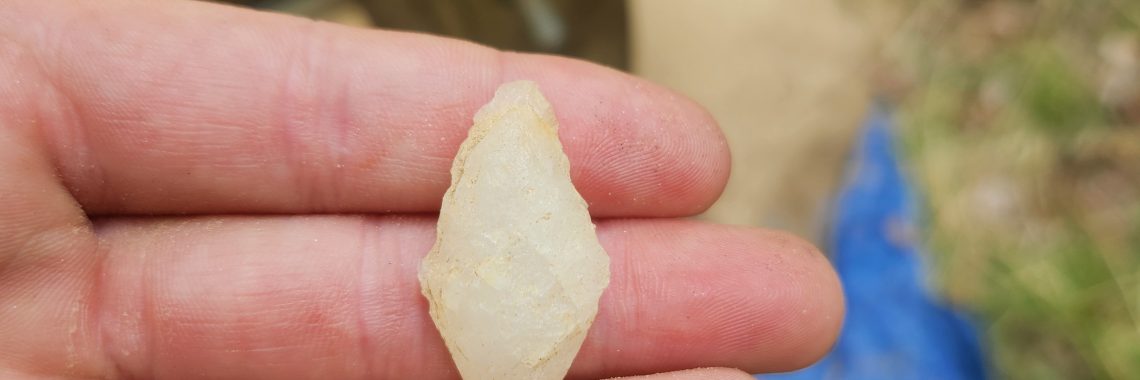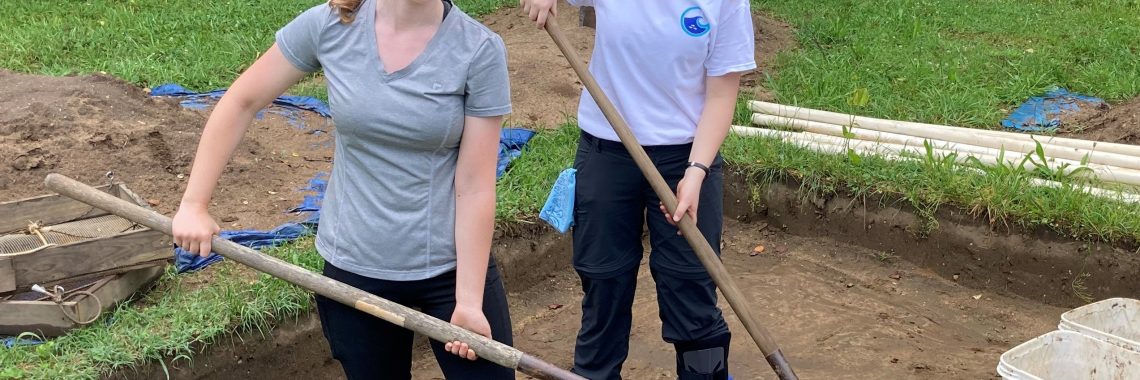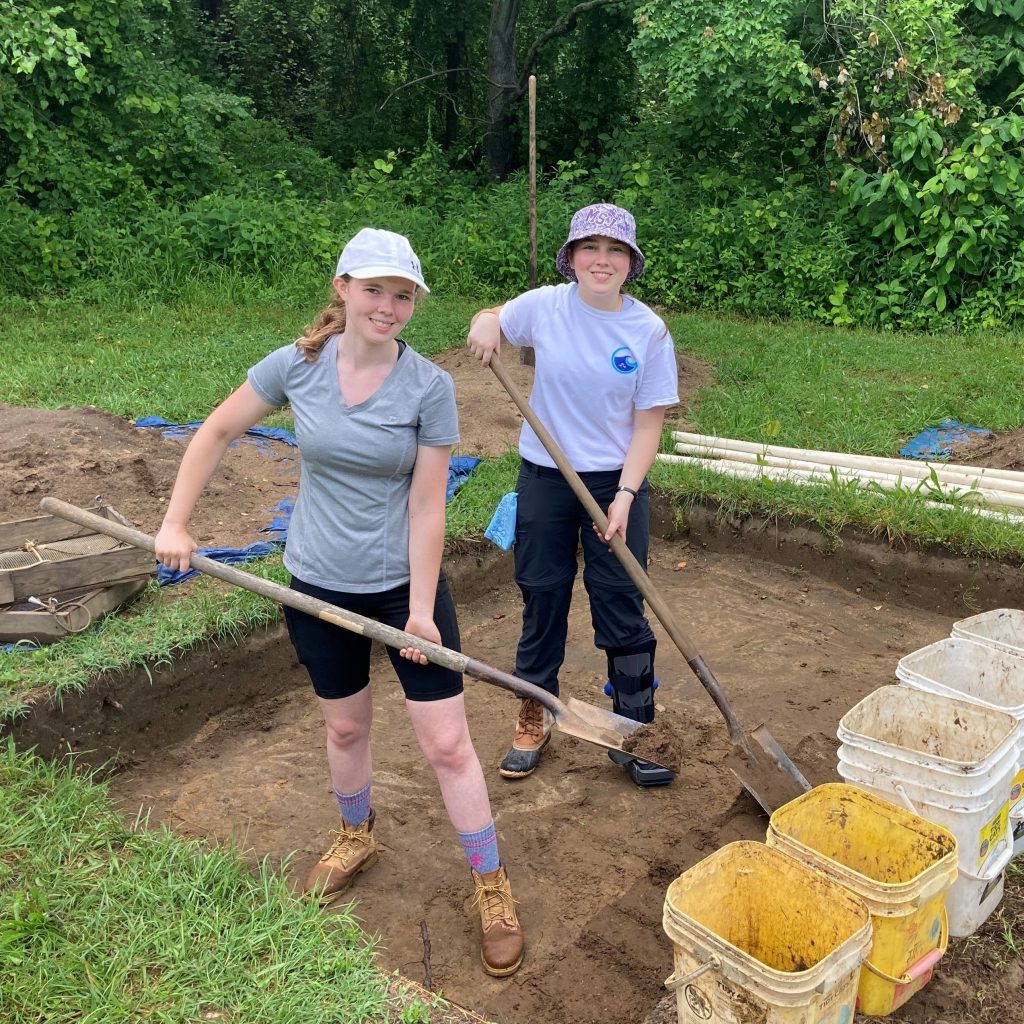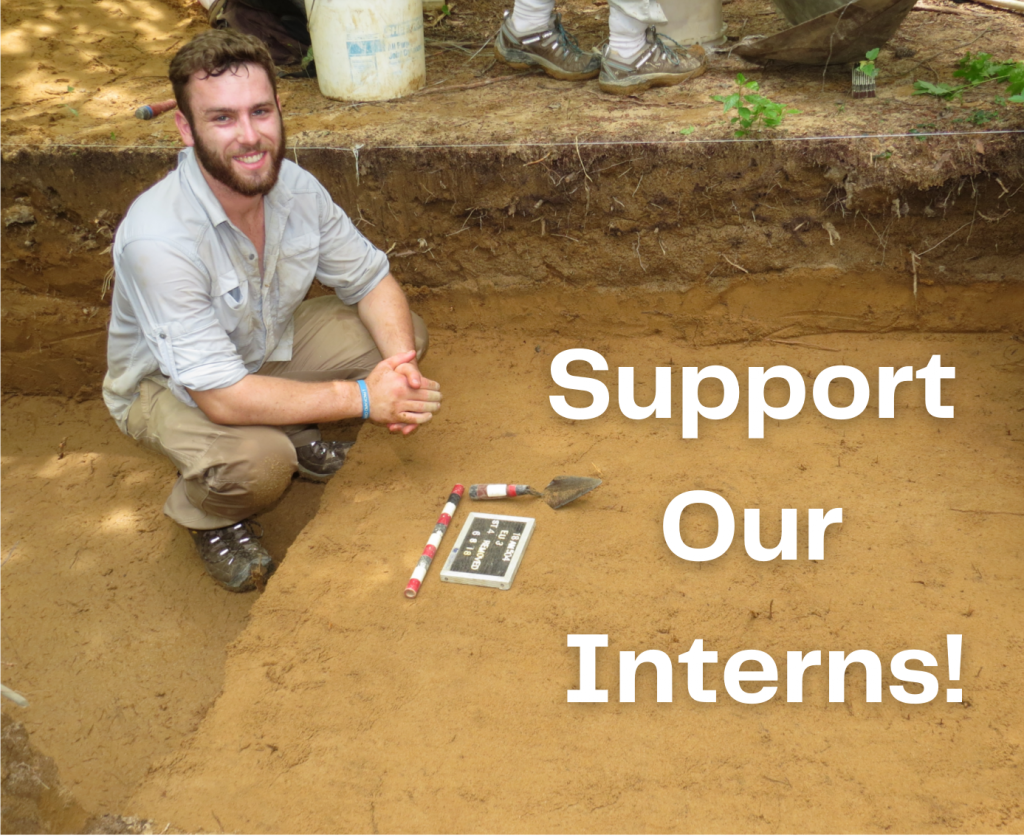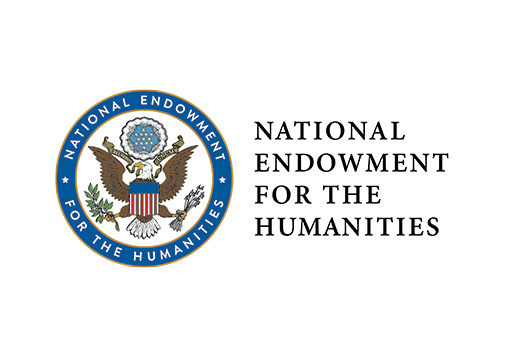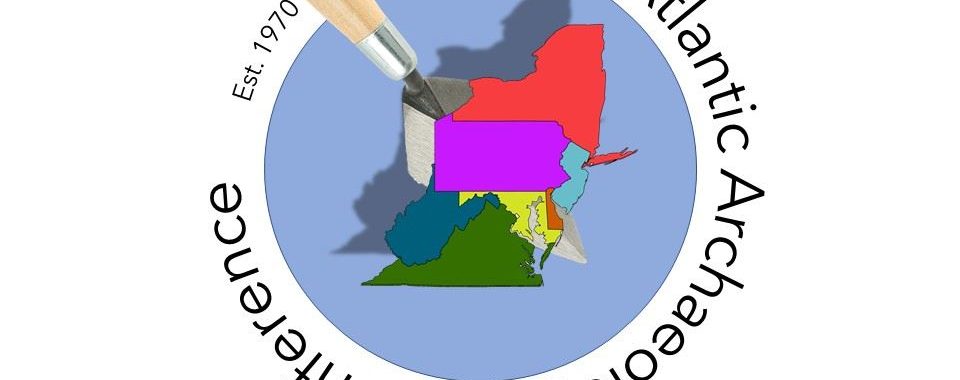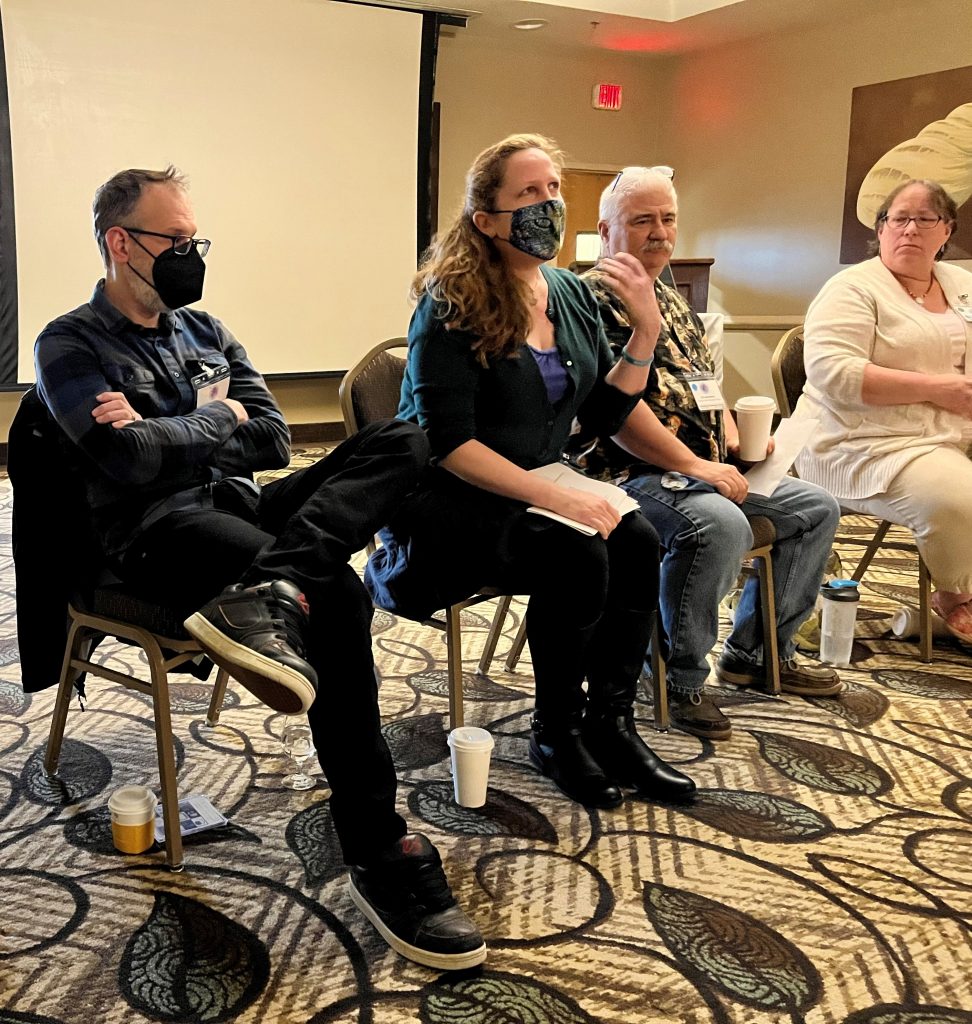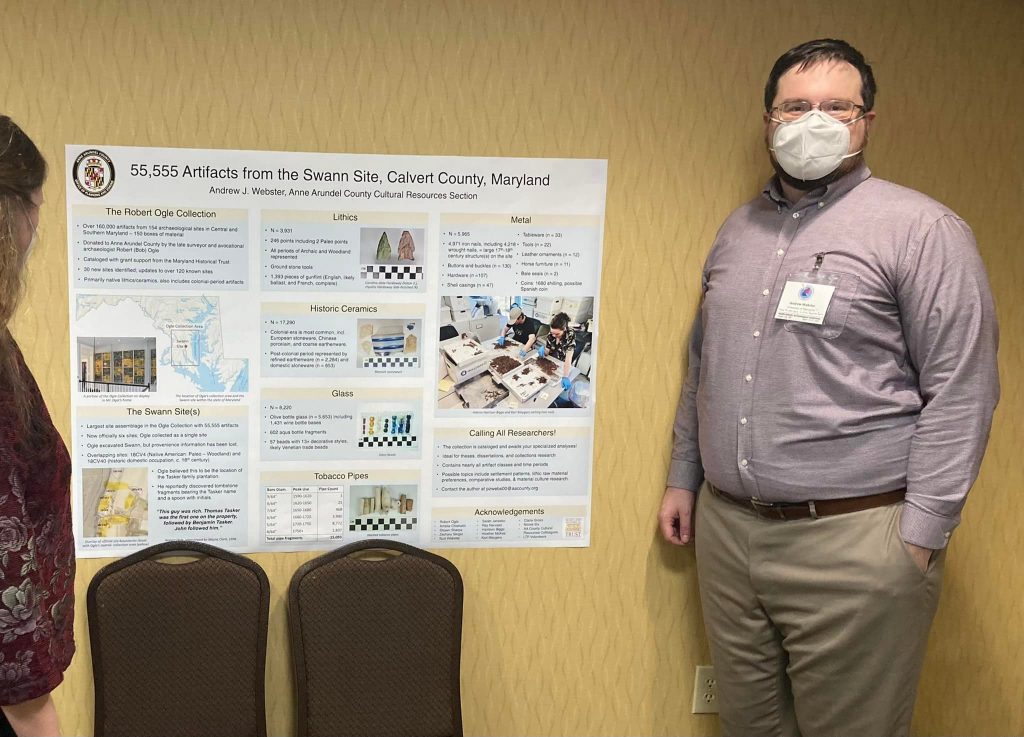Exploring the Effects of Climate Change and Coastal Erosion on Jug Bay’s Cultural Heritage
By Jug Bay Intern Haley Borowy. This blog post was originally published in Marsh Notes, the newsletter of Jug Bay Wetlands Sanctuary, and is cross-posted here.
My summer internship project was an archaeological investigation of Emory Waters Nature Preserve. Located in the southern portion of Jug Bay Wetlands Sanctuary’s east coast, Emory Waters has had little archaeology done. It contains three archaeological sites, two of which we only know of due to a 2019 pedestrian survey, where people look for artifacts on the surface of the ground and do not dig. Like several places in Jug Bay, Emory Waters suffers from severe coastal erosion, with its lower locations at risk of sea level rise. I want to study how climate change and its effects, like worsening erosion and sea level rise, affect archaeology sites, so this area was perfect.

From left: Volunteers Ishy Gonzalez-Prieto, Saffron Hayes, Haley Borowy, and county archaeologist Drew Webster at a shovel test pit.
In July, myself, Anne Arundel County archaeologists, county interns, and many volunteers set out to dig 82 shovel test pits (STPs). This type of work entails digging holes every 50 feet that are about two-and-a-half to three feet deep. They were dug to hug the coastline to determine what kind of cultural resources are vulnerable to environmental change. Some additional STPs were dug 25 feet from the originals to better understand the boundaries of several concentrations of artifacts.
Over 1,500 artifacts were recovered, the vast majority of which were from before the colonial period and Native American in origin. All of these were cleaned and bagged in the county archaeology lab by me, other interns, and volunteers. Some other interesting finds included a plethora of decorated pottery shards, stone tools including projectile points, wrought nails, and fragments of a tobacco pipe.
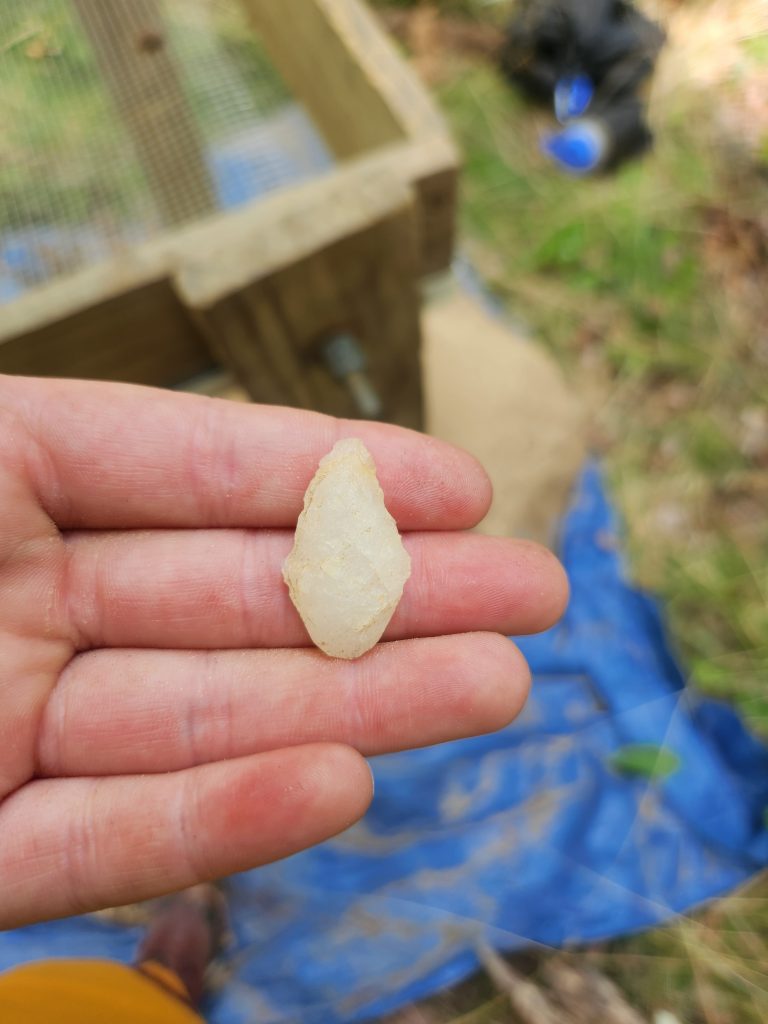
A quartz Piscataway projectile point. Photo courtesy of Haley Borowy.
This part of the coastline has a very heavy concentration of cultural material. Out of the 82 STPs we dug, only 10 were negative. With STP surveys, usually those numbers are the other way around. This speaks to the need to protect Emory Waters from further coastal erosion and to explore it more in depth archaeologically.

